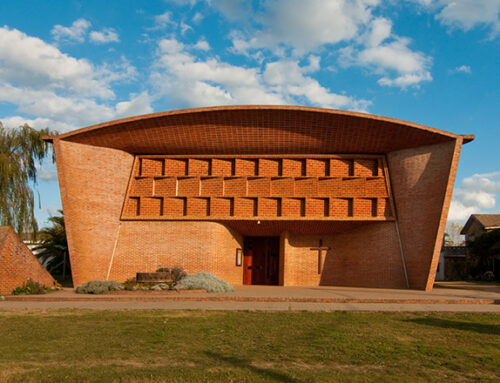I moved to Uruguay in 2006 for a mix of reasons: a new adventure, a simpler life, and to invest in real estate.
Healthier living wasn’t on my list. It was a side benefit I discovered once here. And now, it’s one of the things about Uruguay I appreciate most.
How, specifically, does my expat life in Uruguay contribute to a healthier life?
Read on for five examples.
1. Plenty of Fresh Whole Foods

Source: International Living
Uruguay’s interior is comprised of highly productive farm land. And its waters team with fish. So, fresh local whole foods are abundant.
I live in Montevideo, Uruguay’s capital, a city of 1.4 million people. In most Montevideo neighborhoods, a street market called a feria (fair) sets up twice a week. The feria in my neighborhood is on Tuesdays and Fridays and stretches a full city block. It’s where I buy fresh local produce, freshly-caught fish, and Uruguayan cheese.
I also shop at Molienda, a neighborhood health-food store. Molienda offers a wide range of nuts, seeds, grains, beans, and spices. It’s where I buy chipped or broken raw almonds (at a discount price) to make my own almond milk. It’s also where I buy free-range eggs and olive oil made in Uruguay.
In the back of a small market near my home, called Frog, is a kitchen section that serves whole-food meals and ready-to-eat salads, vegetables, beans, and meats, sold by weight. A hearty and healthy meal here costs around $4.
2. Lots of Walking
In Uruguay, I do more walking than ever before. I walk for transportation. I walk (and or run) for exercise. And I walk with others as a social activity.
Montevideo is a city comprised of adjoining small neighborhoods. In my neighborhood, like most, you find a small market, butcher shop, bakery, cafe, hardware store, pharmacy, and health-food store. With everything so close, I do all my day-to-day shopping on foot.
For exercise, I walk or run on the rambla—a 13-mile-long promenade that runs the full length of the city’s waterfront. On the rambla, I go out-and-back as far I want without crossing a street or entering traffic.
I also enjoy walking with others. Chatting with a friend while walking to a class or expat gathering combines transportation, exercise, and socializing.
3. Greater Community Among Neighbors

Source: International Living
When I first moved to Montevideo, my apartment neighbors called me by name. The workers in neighborhood stores usually addressed me as caballero (sir).
Since then, connections formed. These days, I help my neighbors here and there and they help me. The cuidacoche (street parking attendant) teaches me Spanish slang. The owner of the nearby newspaper and magazine stand extends a warm greeting as I walk by.
My local butcher remembers I like my pork chops cut thick. When the kitchen worker at Frog puts together my quick and healthy meal, she describes each food item as she packs it—speaking in a warm tone, often adding an affectionate “ito” to the end of words.
Now, many in my community call me vacino (neighbor)—a status that came with familiarity over time.
These light and frequent neighborly interactions provide a sense of recognition and belonging. And I’m sure they make a positive contribution to my health.
4. More Preventative Healthcare
For healthcare, I’m a member of the Hospital Scheme (a type of membership healthcare plan) at the British Hospital in Montevideo. With this plan, I go to the British Hospital for all my medical care needs.
One of the things I appreciate most about the British Hospital, is the emphasis on preventative care and early diagnosis.
As an example, my plan includes an annual physical exam, EKG, full abdominal ultrasound, and a range of blood tests.
As I got older, I received a baseline test for my prostate and colon health. And since I’m fair skinned, I get an annual full-body exam by my dermatologist.
After a round of tests, I sit-down with my primary doctor. He explains test results. He compares the results to previous years. Then, dispenses his conclusions and advice.
With these regular screenings, I’ve been able to catch negative trends. And turn things around with diet changes and exercise.
Unlike my healthcare coverage in the U.S., all these regular screenings come included as part of my plan.
Note: The British Hospital does not accept new members over 60. (I started with the British Hospital in my 40s.) Most expats who come to Uruguay in retirement join a hospital plan called a mutualista. In Montevideo, you find many hospital mutualistas to choose from. The most popular among expat retirees is Asociacion Española, said to possess the most modern equipment in Uruguay. Screenings at Asociacion Española are also included. But they may not be the same or as routine as they are at the British Hospital.
5. Less Financial Stress
For many in the U.S., the chance of runaway medical costs is a financial threat. Even with Medicare, the average U.S. couple may need hundreds of thousands of dollars for healthcare and medical care costs in retirement.
How’s that for financial stress?
Fortunately, in Uruguay, it’s a different story.
A mutualista costs around $60 per month plus a small copayment when you use the hospital’s services.
The British Hospital, which offers shorter wait time times and more polished surroundings, may cost between $250 and $300 per month, plus a small copayment when you use services.
With either a mutualista or the British Hospital, you don’t need to worry about:
- Big deductibles
- A big unexpected medical expense
- A lifetime policy cap
- Tricky insurance policy terms and changes
- Confusing paperwork and billing
- Policy exclusions
- Your monthly rate getting jacked up if you fall ill.
How much are the copayments? To give you an example, one year I had a health scare. It involved multiple doctor visits, an MRI, a CT scan, a biopsy, and a consultation with a surgeon. Luckily, everything turned out okay. The copays for all these hospital services added up to a little over $100.
Written by David Hammond for International Living





